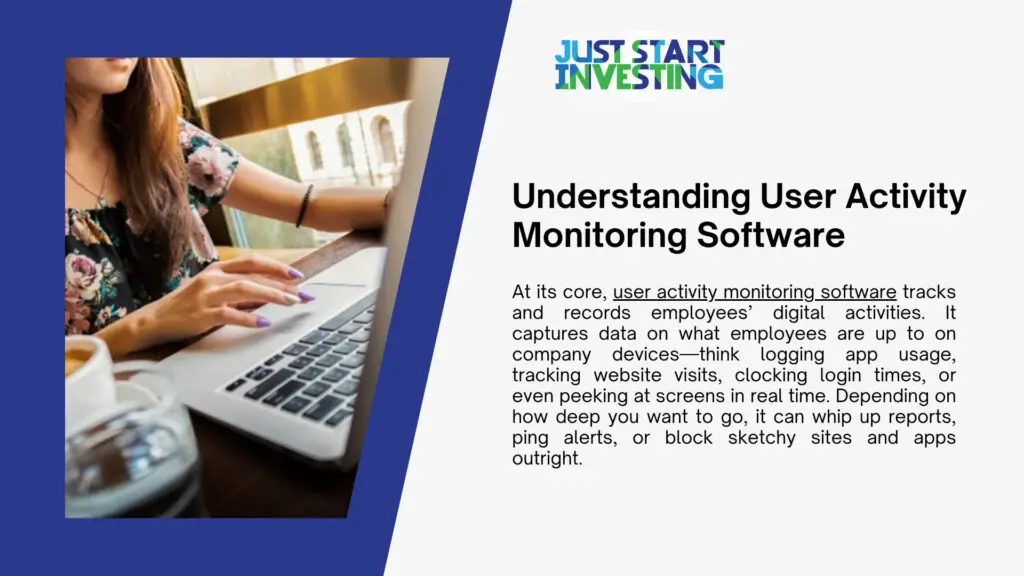These days, it seems like every company’s jumping on the bandwagon of user activity monitoring software. You know, those tools that keep tabs on what employees are doing on company computers—tracking productivity, locking down sensitive info, and making sure everyone’s playing by the rules. In fact, it is expected that by the end of the year, 70% of large employers will monitor their staff.
These tools give businesses a front-row seat to how people are using devices and networks, shining a light on inefficiencies, security slip-ups, or even policy breaches. But here’s the catch: while some businesses swear by it as a game-changer for staying sharp and secure, others worry about what it does to employee trust.
With cyber threats creeping up and productivity pressures mounting, it’s no wonder business owners are scratching their heads over this one. Is user activity monitoring a must-have shield against risks, or does it risk turning the workplace into a surveillance state that tanks morale? Let’s break it down—pros, cons, and everything businesses need to chew over before taking the plunge.
Understanding User Activity Monitoring Software

At its core, user activity monitoring software tracks and records employees’ digital activities. It captures data on what employees are up to on company devices—think logging app usage, tracking website visits, clocking login times, or even peeking at screens in real time. Depending on how deep you want to go, it can whip up reports, ping alerts, or block sketchy sites and apps outright.
You’ve got options, too. Cloud-based tools are a hit for businesses with remote crews since they let you monitor from anywhere. On the flip side, on-premises setups give you tighter control over data—perfect if security’s your top worry. Either way, the goal’s the same: crank up efficiency and keep things safe. But whether it delivers? That’s all about how you roll it out.
Key Benefits of User Activity Monitoring Software for Businesses
Let’s start with the big win: security. With cyber threats like insider leaks, sneaky data grabs, or phishing scams lurking, this software’s a lifesaver. It spots weird behavior fast—like someone downloading a mountain of files they shouldn’t—letting you slam the brakes before things spiral. Plus, it keeps everyone honest about following cybersecurity rules, cutting down on accidental “oops” moments that could spill sensitive data.
Then there’s the productivity angle. By peeking at how employees spend their workday, companies can spot time-wasting activities, tweak workflows, and get more bang for their buck. It’s like having hard data to back up coaching or set fair goals. Bonus? You might even catch your star players in action—folks who deserve a shoutout or a step up.
Potential Drawbacks and Ethical Considerations
But it’s not all sunshine and rainbows. The idea of being constantly monitored can make employees feel micromanaged. Employees might feel like they’re under a microscope, which can sour morale and make the office vibe tense. If they think it’s too nosy, you’re risking a dip in job satisfaction—and maybe even losing good talent. It’s a fine line between keeping an eye out and respecting privacy.
Oh, and don’t forget the legal headaches. Laws like GDPR or CCPA mean you can’t just snoop willy-nilly—there are rules about handling employee data. Mess that up, and you’re looking at fines or a PR nightmare. So, businesses have to play it smart, stay upfront with the team, and make sure their monitoring game’s above board.
Key Factors to Consider Before Investing in User Activity Monitoring Software
First off, figure out what you really need. If you’re in a high-stakes field like finance or healthcare, monitoring might be non-negotiable to stay compliant. But if you’re a smaller business? Maybe a lighter touch—like regular check-ins—does the trick without feeling over the top.
Then there’s the price tag. Basic tools won’t break the bank, but the fancy ones with AI features? That’s a bigger investment. Ask yourself: could this save us from a pricey data breach or juice up productivity enough to pay off? And if it syncs up with your existing tech stack, even better—it could tie everything together for a smoother operation.
Best Practices for Implementing User Activity Monitoring Effectively
Here’s the golden rule: don’t be sneaky. Tell your team what’s being tracked, why you’re doing it, and what happens with the data. Lay out a clear policy—here’s what’s okay, here’s what’s not—and make it about boosting security and efficiency, not playing gotcha. People hate feeling spied on, so transparency’s your best friend.
Use the info to build, not to bash. Instead of slapping wrists over every little slip, dig into the data for coaching opportunities—tweak workloads, streamline tasks, lift the whole team. Keep your policies fresh, too, so you’re in line with privacy laws and the way work keeps evolving. Done right, user activity monitoring can be a win without ruffling feathers.
Bottom Line
So, is user activity monitoring software a smart move? If you’re after tighter security, better productivity, and staying on the right side of regulations, it can absolutely deliver—especially if you keep it ethical and open. The trick is knowing your business inside out: what you need, what your industry demands, and how your crew will take it. Nail that balance between watching and respecting privacy, and you’ve got a tool that lifts the whole operation without dragging down the mood.

Just Start Investing is a personal finance website that makes investing easy. Learn the simple strategies to start investing today, as well as ways to optimize your credit cards, banking, and budget. Just Start Investing has been featured on Business Insider, Forbes, and US News & World Report, among other major publications for its easy-to-follow writing.
